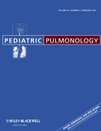Aeration properties of a new sleeping surface for infants
Abstract
Background
Prone sleeping position, use of soft mattresses and head covering by bedclothes are known risk factors for sudden infant death syndrome (SIDS). Rebreathing carbon dioxide (CO2) may be a possible mechanism or a confounding factor of SIDS.
Objective
To compare the aeration properties of a new concept of infant sleeping surface (Net) to three commercial mattresses advertised to improve aeration and to two standard infant mattresses.
Design
Two experiments were performed: (I) A container (head box), filled with 7% CO2 mixture, was opened to the mattress to allow gas mixture to passively diffuse outside and equilibrate with the surrounding room air. (II) Simulation of normal breathing of an infant, using a unidirectional reciprocal syringe, to determine CO2 accumulation within the head box.
Methods
CO2 concentrations in the head box were continuously measured until CO2 levels fell below 1% or for 5 min (experiment I), or until CO2 accumulation levels plateaued or for 6 min (experiment II).
Results
The Net had a significantly faster rate of CO2 elimination (88.5 ± 4.6 and 91.9 ± 0.9 sec, Net alone and when covered with a sheet, respectively) compared to 238.3 ± 14.2 sec to 387.8 ± 7.9 sec for the other mattresses (P < 0.001). Only the Net was able to prevent CO2 accumulation with maximal CO2 levels (0.56 ± 0.03% and 1.16 ± 0.05%; Net alone and when covered with a sheet, respectively) significantly lower than the range of 4.6–6.3% for the other mattresses (P < 0.001).
Conclusions
The new sleeping surface exhibited significantly better aeration properties in dispersing CO2 and in preventing its accumulation. Pediatr. Pulmonol. 2011; 46:193–198. © 2011 Wiley-Liss, Inc.




